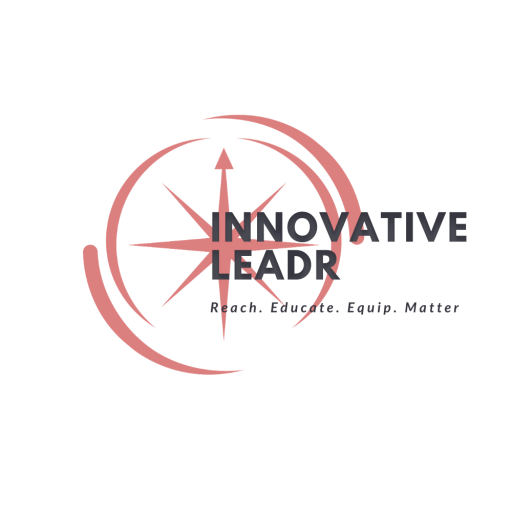
Nov 29, 2016 | Data, MTSS & RtI
Teachers and Educators – How to reach ALL of the students in a classroom
5 Key Components to Ensure Success:
People become teachers because they have a passion for helping children learn and be successful. It is so disheartening to be a teacher and feel as though you have failed a child. Never again will failing a child be an option. Below are 5 key components of initial implementation that will help ensure that you are set up for success to reach all children in your class/grade/school/district.
1. Systematic process for implementing RtI/MTSS district or school-wide
Systematic is the key here! If there is no consistency in screenings and/or assessments used, there is no valid way to measure effectiveness of your implementation
Systematic universal screener(s)
- Systematic universal assessment(s)
- Systematic method for meeting and analyzing data in PLCs
- Systematic process for developing Tier 1: Differentiated Core Instruction Plans
- Systematic plan for reviewing the grade level data to revise/update the plan created as needed.
2. Universal Screening & Universal Assessment Data
It is imperative to have universal data to analyze. Because you can’t always rely on just one data point, it is most effective to have a triangulation of data (at least 3 data points).
- Universal Screener(s) (skill specific screener(s) – fluency, comprehension, vocabulary, etc.)
- Universal Assessment (grade level content/standards-based assessment(s) – baseline assessment, benchmark assessment, prior year End of Grade/Course assessment, etc.)
PLCs strategically meet to analyze data, problem-solve as a PLC, make data-based decisions, and create an effective Tier 1: Differentiated Core Instruction Plan based on that data analyzed.
3. Identify students who are at-risk
Identify all students who did not meet the target/cut scores on the screener(s)/assessment(s) identified by the grade/school/district.
- Students who have at least 2 out of 3 risk indicators based on the target or cut scores from the universal screener(s) and/or universal assessment(s) should automatically be flagged by the team as being Tier 1 at-risk.
- Students who have 3 out of 3 risk indicators – are your most at-risk students and should begin intervention immediately – unless your data states that it is a core instruction issue.
Early Warning Systems: If you are lucky enough to have access to an early warning system – such as the one offered in RtI: Stored! – you will be able to also analyze the following data:
- Absentee Data
- Classroom Grades
- Office Discipline Referral Data (ODRs)
4. Digging Deeper into Diagnostic Data:
If a student’s universal screening data indicates that the student is below or well below grade level, then it is time to dig deeper to identify the student’s foundation specific skill deficit area(s)
5. Creating groups for intervention/enrichment blocks:
Using all of the data, the PLC team can begin creating intervention groups and enrichment groups.
- Teachers should be assigned to instruct the groups based on their strengths. This too should be based on data!
These 5 steps will allow you to truly see each and every student. Once you truly see them and identify their possible risk indicators, as well as gap areas, based on their data, then you have the ability to actually reach all of them. Because it is not an option to fail any child – and – Because all means all!

Sep 23, 2016 | MTSS & RtI
I remember coming straight out of college, into my classroom. I still remember the distinct smell of the whiteboards, overheard projector, and freshly copied papers. The old library books were organized on my shelves {in no good order} and textbooks were laying on students’ desks.
On the first day I was more eager than my students. I anxiously anticipated their arrival. I helped them come into our class and get their supplies filed away. We did the typical beginning of the year relationship building and life was good; until it wasn’t.
I remember getting our first piece of data back from district baseline assessments. The feeling of excitement turned to fear when I saw how incredibly below grade level my students were performing. How was I ever going to get these students prepared for their 4th grade EOG? More importantly, how would I ever get them ready for what was to come next: life!
I taught my heart out. Every teacher does. We all have the best intent, but it wasn’t enough. My students grew because my core instruction was par for a first year teacher. Some of them passed, but most of them didn’t. I was heartbroken. Had my dying passion to save every kid that walked through my classroom drifted away too far out of reach?
I remember the night I decided that my only option to continue to learn how to meet students’ needs was to return to school. Sure, experience builds knowledge, but I didn’t have time because I had kids in my class, right now. Students that needed me to save them. Students in 4th grade that needed to be taught to read.
I enrolled in grad school and begin my journey as a lifetime learner. I enrolled in every professional development the district offered in order to better improve my instruction. It helped. Undeniably, my core instruction was getting stronger. I learned to successfully differentiate for my different levels of learners {by that I mean- below, on, and above grade level content} and more and more students began growing in my classroom and reaching grade level proficiency.
I remember my fourth year teaching. I had completed grad school and was feeling pretty well about the rigor of my core instruction. I remember having that same pit in my stomach as my first year teaching when my struggling learners took any kind of core assessment. While I was reaching many in my classroom, I still wasn’t reaching them ALL. Heartbroken, I had the same parent conference I had always had. Our dialogue went something like this: Your child {in 4th grade} still cannot read. We are working on all kinds of strategies here at school. Please make sure you are reading with them at home too. Parents, defeated, tear filled eyes, nodding their head, to comply. Something had to change.
I volunteered to be on this RtI committee, knowing nothing of the adventure this professional development would lead me on. Not realizing, the change that was about to take place in my classroom would forever change my instructional approach. I completed the PD and began training staff at my school. Trying to implement RtI in my classroom single handedly. Immediately I saw a difference. Only imagining what a difference this change may make if our whole school followed this same model. Over time, I was able to work in a school that was fully implementing RtI. We administered screeners, diagnosed deficits, and divided up intervention instruction appropriately.
I remember looking at my MOY data in awe. I had my first parent conference after successfully implementing RtI in our school. I’ll never forget the first bear hug I got from the parent that cried for a different reason. She cried not because she hurt for her child, but for the first time someone knew how to help her baby read. My heart filled with joy. The more gaps we closed, the hungrier I got for a deeper understanding of the RtI model.
With continued district support I filled my bucket with authentic, engaging, targeted strategies for core instruction, strategic interventions, and intensive instructional support. I had a power. A superpower. I could teach every student that walked into my classroom. I could make them feel successful. I could empower them to close gaps and reach for goals that once would have not been possible. RtI saved me. It saved my students.

Sep 16, 2016 | MTSS & RtI
Entering the conference room, I noticed I was holding my breath. “Please bring the appropriate data and documentation; Please bring the appropriate data and documentation”, was the line repeating in my head as I glanced at the empty chairs around the table. I believe I said a couple of prayers prior to the next person entering the room, as our Tier 3 Problem-Solving Team Meeting was about to begin.
I was the RtI Coordinator who also happened to be the School Counselor, the 504 Coordinator, and the PBIS Coordinator. This long awaited meeting was finally about to take place and it was the first time all year that the parent had agreed to attend. I was so excited, because all of the right people were going to be around the same table at the same time to problem-solve for this little girl who was struggling so much.
The girl’s classroom teacher walked in 10 minutes late and threw a folder on the table. I opened that folder up to see only 1 piece of paper with a hand written score in the upper right hand corner, and it was in that moment that I knew. There was not going to be anything we were going to be able to do for this little girl, because we didn’t have the right data and documentation to make any data-based decisions. It was late March at this point, so my frustration turned into anger, and then quickly to this feeling of urgency, as I realized that it was too late to help that little girl, and there went another year. I had failed her!
On my drive home from work that Thursday in late March, I made a promise to myself, I was not going to fail another child. Not on my watch. If there was not an effective way to manage the data and documentation needed to help children grow and succeed through implementation of the RtI Process – process that I believe so much in – then it was up to me to create one.
It was out of my profound determination to keep that promise to myself, that RtI: Stored! was created!
My goal was to eliminate confusion regarding the ‘what’ behind the role of the teacher when it came to data and documentation, while giving teachers back the time to do what they do best – time to TEACH! If RtI: Stored! could accomplish that goal, then we could finally have authentic problem-solving conversations about children through effective PLCs.
It is time to never let another child slip through the cracks and truly build that systematic and sustainable process for implementing for the RtI Process with fidelity!



